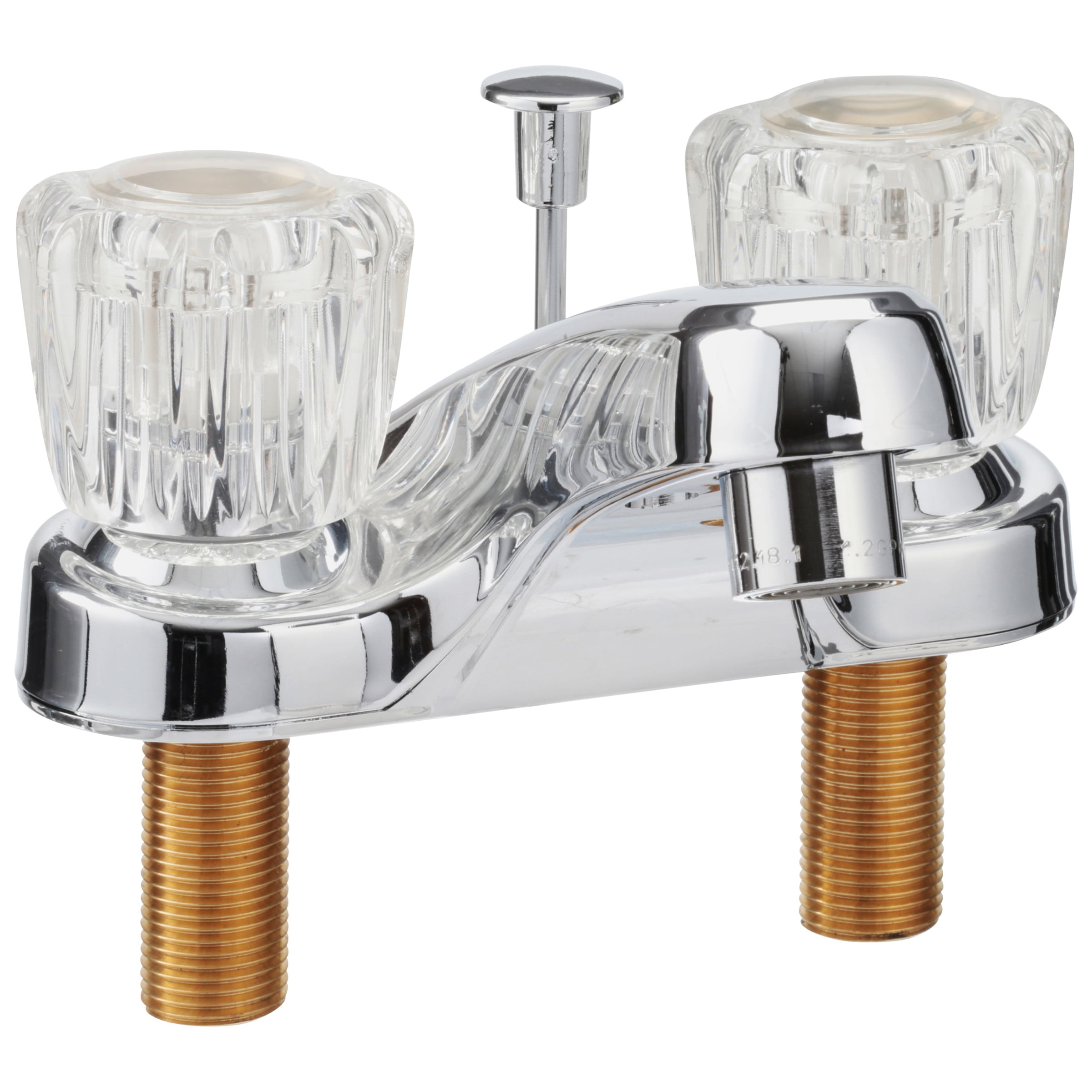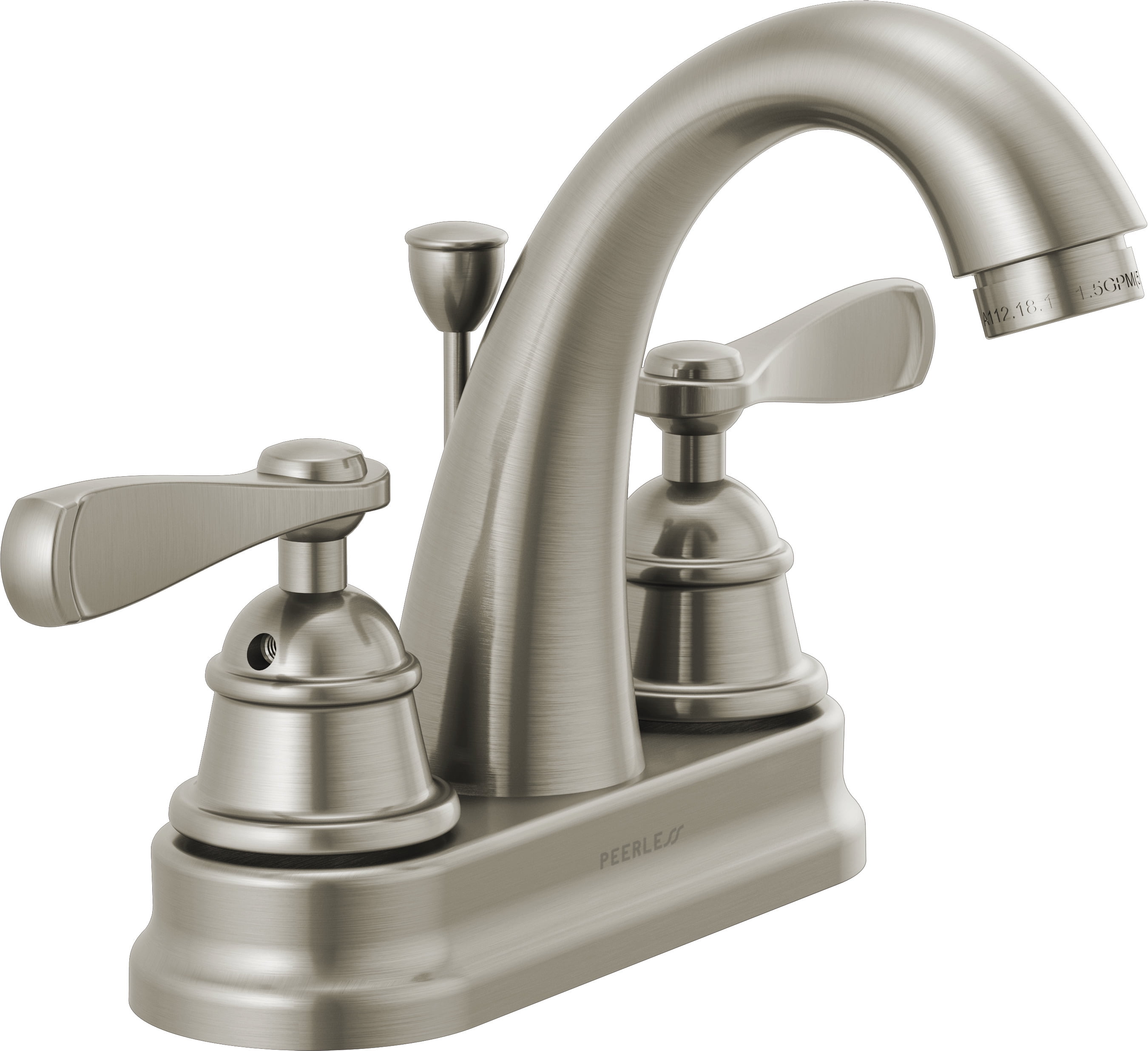Types of Bathroom Taps

Choosing the right bathroom taps can significantly enhance the functionality and aesthetics of your bathroom. With various types available, understanding their features and benefits is crucial to make an informed decision. This guide explores different types of bathroom taps, highlighting their advantages and disadvantages.
Single-Lever Bathroom Taps
Single-lever taps offer a convenient and efficient way to control both water flow and temperature with a single lever. They are commonly found in modern bathrooms and are known for their sleek design.
Advantages:
- Ease of Use: The single lever allows for effortless control of water flow and temperature with just one hand.
- Space-Saving: Single-lever taps occupy less space on the countertop or sink, making them ideal for smaller bathrooms.
- Modern Aesthetics: Their sleek and minimalist design complements contemporary bathroom styles.
Disadvantages:
- Temperature Fluctuation: Accidental movement of the lever can cause sudden temperature changes.
- Limited Control: It can be challenging to achieve precise temperature settings with a single lever.
Image:
Imagine a single-lever tap mounted on a sink. The tap has a single, vertical lever that extends from the spout. Turning the lever clockwise increases the water flow, while turning it counter-clockwise decreases it. The lever can also be moved up or down to adjust the water temperature.
Two-Handle Bathroom Taps
Two-handle taps feature separate handles for controlling water flow and temperature. This traditional design offers greater precision and control over the water flow and temperature.
Advantages:
- Precise Temperature Control: Two separate handles allow for precise adjustment of both hot and cold water flow, preventing sudden temperature changes.
- Enhanced Control: Individual handles provide more control over water flow and temperature compared to a single lever.
- Durability: Two-handle taps are generally known for their durability and longevity.
Disadvantages:
- Less Space-Efficient: Two handles require more space on the countertop or sink, which can be a concern in smaller bathrooms.
- Less Modern Aesthetics: Their traditional design might not be suitable for modern bathroom styles.
Image:
Visualize a two-handle tap with two separate handles positioned on either side of the spout. One handle controls the hot water flow, while the other controls the cold water flow. Each handle can be turned independently to adjust the water temperature and flow.
Wall-Mounted Bathroom Taps
Wall-mounted taps are installed directly onto the wall, eliminating the need for countertop space. They offer a sleek and minimalist look, making them a popular choice for contemporary bathrooms.
Advantages:
- Space-Saving: Wall-mounted taps free up countertop space, creating a more spacious and uncluttered look.
- Modern Aesthetics: Their minimalist design complements modern bathroom styles.
- Easy to Clean: The absence of a base makes cleaning the surrounding area easier.
Disadvantages:
- Installation Complexity: Wall-mounted taps require more complex installation, potentially involving plumbing modifications.
- Limited Flexibility: The fixed position of the tap limits the placement of the sink and other bathroom fixtures.
Image:
Imagine a tap mounted directly onto the wall, with the spout extending out horizontally. The handles are also mounted on the wall, allowing for a clean and uncluttered countertop.
Deck-Mounted Bathroom Taps
Deck-mounted taps are installed on the countertop, typically near the sink. They offer a traditional look and are often found in classic bathroom designs.
Advantages:
- Traditional Aesthetics: Deck-mounted taps provide a classic and timeless look, suitable for traditional bathroom styles.
- Easy Installation: They are relatively easy to install, requiring minimal plumbing modifications.
- Flexibility: Deck-mounted taps allow for greater flexibility in sink placement.
Disadvantages:
Image:
Envision a tap mounted on the countertop, with the spout extending over the sink. The handles are also positioned on the countertop, providing a traditional and classic look.
Choosing the Right Bathroom Tap: Home Hardware Bathroom Taps

Selecting the perfect bathroom tap is an important decision, as it impacts both the functionality and aesthetics of your bathroom. It’s not just about turning water on and off; it’s about finding a tap that complements your bathroom style, meets your practical needs, and fits your budget.
Factors to Consider When Choosing Bathroom Taps
Several factors should be considered when selecting bathroom taps. These include style, finish, functionality, and budget.
Style
The style of your bathroom tap should complement the overall design of your bathroom. Modern bathrooms often feature sleek, minimalist taps with clean lines, while traditional bathrooms might prefer more ornate taps with intricate details.
Finish
The finish of your bathroom tap is another important consideration. Popular finishes include chrome, nickel, brass, and matte black. Each finish has its own unique look and feel, and the best choice for you will depend on your personal preferences and the overall style of your bathroom.
Functionality
Consider the functionality of your bathroom tap. Do you need a single-lever tap or a two-handle tap? Do you need a tap with a pull-out spray head? Also, consider the type of water pressure in your home. Some taps are designed for low-pressure systems, while others are better suited for high-pressure systems.
Budget
Finally, consider your budget. Bathroom taps can range in price from a few hundred dollars to several thousand dollars. It’s important to set a budget before you start shopping so that you don’t overspend.
Comparing Different Materials Used in Bathroom Taps
Different materials are used to manufacture bathroom taps, each with its own pros and cons. Here’s a table comparing some popular materials:
| Material | Pros | Cons |
|---|---|---|
| Chrome | Durable, easy to clean, affordable | Can show water spots, prone to scratches |
| Nickel | Durable, resistant to corrosion, comes in various finishes | More expensive than chrome |
| Brass | Classic, elegant, durable | Can be expensive, requires regular cleaning to prevent tarnishing |
Tips for Choosing the Right Bathroom Tap for Specific Bathroom Styles
Here are some tips for choosing the right bathroom tap for specific bathroom styles:
Modern Bathroom
- Choose sleek, minimalist taps with clean lines.
- Opt for a chrome or brushed nickel finish.
- Consider a single-lever tap for a streamlined look.
Traditional Bathroom
- Choose ornate taps with intricate details.
- Select a brass or oil-rubbed bronze finish.
- Consider a two-handle tap for a classic look.
Minimalist Bathroom
- Choose taps with simple designs and clean lines.
- Opt for a matte black or white finish.
- Consider a single-lever tap for a minimalist look.
Installing Bathroom Taps

Installing bathroom taps is a straightforward process that can be done by most homeowners with basic plumbing skills. This guide will walk you through the steps involved, providing helpful tips and safety precautions to ensure a successful installation.
Tools Required
A set of tools is essential for installing bathroom taps. These tools ensure that the installation is done accurately and safely.
- Adjustable wrench
- Basin wrench
- Pipe wrench
- Teflon tape
- Screwdriver
- Level
- Plumber’s putty
- Safety glasses
- Gloves
Safety Precautions
Safety is paramount during any plumbing project. Here are some crucial safety precautions to keep in mind:
- Always turn off the water supply to the bathroom before starting any work. This prevents water from spraying unexpectedly and causing damage.
- Wear safety glasses to protect your eyes from debris and water.
- Use gloves to protect your hands from sharp edges and potential contaminants.
- Be careful when handling tools, especially when working with pipes. Use caution to avoid cuts or injuries.
- If you are unsure about any part of the installation process, consult a professional plumber.
Steps for Installing Bathroom Taps
Installing bathroom taps involves a series of steps, starting with the preparation and ending with the final connections. Here is a detailed step-by-step guide for installing bathroom taps:
Step 1: Turn Off the Water Supply
The first step is to turn off the water supply to the bathroom. This is usually done by turning a valve located near the water meter or on the main water line.
Step 2: Disconnect the Existing Tap
Before installing the new tap, disconnect the existing tap. Use a basin wrench to loosen the nuts connecting the tap to the supply lines. Be careful not to damage the pipes.
Step 3: Remove the Old Tap
Once the nuts are loosened, carefully remove the old tap from the sink or bathtub. Dispose of the old tap properly.
Step 4: Prepare the New Tap
Before installing the new tap, ensure that all the necessary parts are included.
Step 5: Connect the Supply Lines
Connect the new tap to the supply lines. Wrap Teflon tape around the threads of the supply lines to prevent leaks.
Step 6: Secure the Tap
Secure the tap to the sink or bathtub using the provided mounting hardware. Ensure that the tap is level before tightening the nuts.
Step 7: Connect the Drain
Connect the drain to the tap using the provided drain assembly.
Step 8: Turn On the Water Supply
Once the installation is complete, turn on the water supply to the bathroom. Check for leaks and tighten any loose connections.
Step 9: Test the Tap
Finally, test the tap by turning it on and off. Ensure that the water flows freely and that there are no leaks.
Connecting the Tap to the Water Supply and Drainage System, Home hardware bathroom taps
Connecting the tap to the water supply and drainage system is a crucial step in the installation process. Here’s a breakdown of the process:
Connecting to the Water Supply
- Use a pair of adjustable wrenches to tighten the nuts connecting the tap to the supply lines.
- Ensure that the nuts are tightened securely but not overtightened, as this can damage the pipes.
- Wrap Teflon tape around the threads of the supply lines to prevent leaks.
- Check for leaks after connecting the supply lines. If there are any leaks, tighten the nuts further or re-wrap the Teflon tape.
Connecting to the Drainage System
- Connect the drain to the tap using the provided drain assembly.
- Ensure that the drain is properly sealed to prevent leaks.
- Test the drain by pouring water into the sink or bathtub. If the water drains properly, the installation is complete.
Home hardware bathroom taps can be a real game-changer for your bathroom’s look and feel, but don’t forget about the storage! If you’re looking for stylish and functional solutions, check out pottery barn bathroom storage for inspiration. Once you’ve got your storage sorted, you can really focus on finding the perfect taps to complete the look.
Home hardware stores are great places to find a wide variety of bathroom taps, but sometimes you need to get a little creative with your budget. If you’re on the Gold Coast, you’re in luck! Check out discount bathroom supplies gold coast for some amazing deals on everything from taps to showerheads.
You might even find some unique styles that you wouldn’t find in your local hardware store!